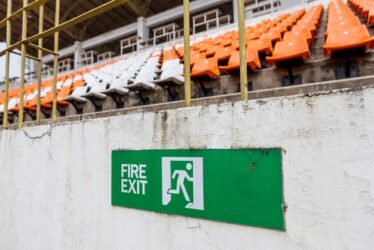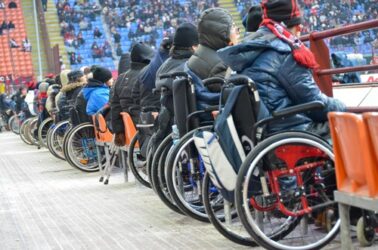IBC Safety Codes for Auditorium Design: Ensuring Safety and Compliance
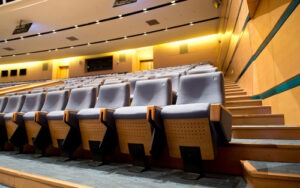 Auditoriums are dynamic spaces where large numbers of people gather for various events. Ensuring safety within these venues is of paramount importance. The International Building Code (IBC) provides comprehensive safety codes and guidelines specifically tailored for auditorium design. In this article, we will explore key IBC safety codes for auditorium design, highlighting their significance in creating safe and secure spaces for occupants.
Auditoriums are dynamic spaces where large numbers of people gather for various events. Ensuring safety within these venues is of paramount importance. The International Building Code (IBC) provides comprehensive safety codes and guidelines specifically tailored for auditorium design. In this article, we will explore key IBC safety codes for auditorium design, highlighting their significance in creating safe and secure spaces for occupants.
Occupant Load and Egress
The IBC sets regulations regarding occupant load and egress considerations in auditoriums. Key aspects include:
Occupant Load Calculation:
- The IBC defines formulas and factors for determining the maximum number of occupants allowed within an auditorium.
- Calculations take into account factors such as seating area, occupancy type, and exits available.
Egress Pathways and Exits:
- The IBC specifies the number, size, and location of exits based on the occupant load and occupancy type.
- Clear and unobstructed pathways, along with properly marked exits, are essential for safe evacuation during emergencies.
 Fire and Life Safety
Fire and Life Safety
Fire safety is a crucial aspect of auditorium design, and the IBC provides guidelines for fire prevention and mitigation. Key considerations include:
Fire-Resistant Materials:
- The IBC mandates the use of fire-resistant materials for walls, ceilings, and other interior surfaces in auditoriums.
- Fire-resistant materials help limit the spread of fire, providing seat occupiers more time to safely evacuate.
Fire Detection and Suppression Systems:
- The IBC outlines requirements for fire detection systems, including smoke detectors and fire alarms, to ensure timely notification of emergencies.
- Depending on the size and occupancy of the auditorium, the IBC may also require the installation of fire suppression systems, such as sprinklers.
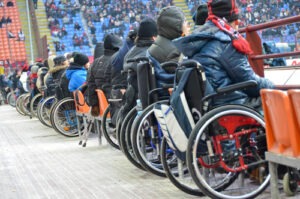 Accessibility and Universal Design
Accessibility and Universal Design
The IBC incorporates provisions from the Americans with Disabilities Act (ADA) to guarantee anyone with disabilities to have access. Key considerations include:
Accessible Seating and Paths of Travel:
- The IBC outlines requirements for accessible seating areas, including the number and placement of wheelchair spaces and companion seating.
- Accessible paths of travel, such as ramps and elevators, must be provided to ensure equal access to seating areas and amenities.
Signage and Wayfinding:
- The IBC specifies requirements for accessible signage, ensuring clear identification of accessible routes, exits, and facilities within the auditorium.
- Braille signage and tactile elements may be necessary to assist individuals with visual impairments.
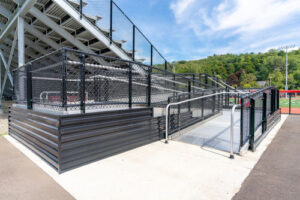 Structural Integrity and Safety
Structural Integrity and Safety
The IBC addresses structural integrity and safety considerations within auditoriums. Key aspects include:
Load-Bearing Capacity:
- The IBC defines minimum structural requirements to ensure the auditorium’s load-bearing capacity can safely accommodate the anticipated occupancy and live loads.
Seating and Aisle Design:
- The IBC provides guidelines for seating layout, row spacing, and aisle widths to ensure safe and efficient movement within the auditorium.
- Aisles should be free from obstructions, allowing unimpeded access to seating and emergency exits.
Compliance with IBC safety codes is essential when designing auditoriums to ensure the safety and well-being of occupants. By adhering to regulations regarding occupant load, egress pathways, life safety, fire, being accessible, and structural stability, building owners can create auditoriums that prioritize safety, accessibility, and a positive experience for all attendees. The IBC serves as a valuable resource, offering comprehensive guidelines that promote safety, compliance, and the creation of secure environments within auditorium spaces.





